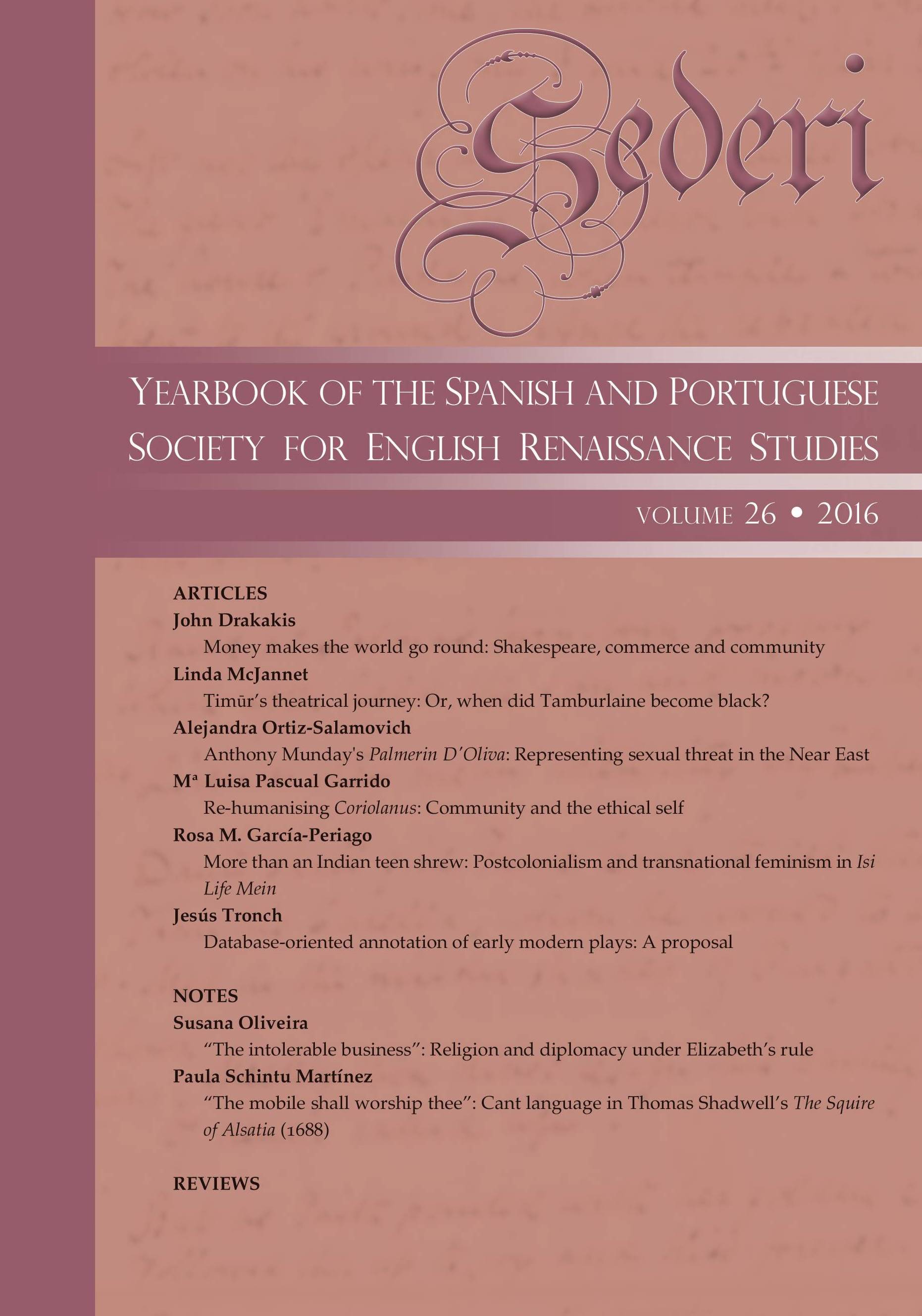Anthony Munday's Palmerin d'Oliva: Representing sexual threat in the Near East
Abstract
This article explores how Anthony Munday’s Palmerin d’Oliva (1588), Part II, portrays the threat of Muslims in the Near East. Munday’s source is the French L’Histoire de Palmerin d’Olive (1546), which Jean Maugin had translated from the anonymous Spanish chivalric romance Palmerín de Olivia (1511). I focus on the way that the description of the Muslim menace changes in the course of translation. I argue that both French and English translators manipulate medieval and early modern sexual stereotypes used to describe Muslim culture in order to heighten the sense of Islamic aggression and the holiness of Christianity as a counter to its threat. Munday’s translation, in particular, represents the ambivalent views that his contemporary England held about Islam and the Near East, and also highlights the sanctity of Christian chastity and marriage, which are issues that he also develops in Part I of the Palmerin d’Oliva.Downloads
Downloads
Issue
Section
License
The copyright holder of the published contributions is SEDERI.The hardcopy and an open-access version of the journal will be published simultaneously. The issues will be available online in the SEDERI website (http://www.sederi.org/yearbook/) and other repositories that have signed an agreement with SEDERI.
The authors who publish with this journal agree to the following terms:
a) SEDERI retains copyright of the essay.
b) If the author wishes to republish or rewrite the essay for another journal, or include the essay published in SEDERI in their personal repositories, or in any other way, they should contact the editors to obtain permission to do so. This will entail citing SEDERI as the original source and sending the editors a copy of the new version, or the link to the website, in case of online publishing.
The author(s) hereby warrant(s) that:
a) The essay submitted for publication is an original creation and does not infringe any copyright or property right of another journal, author or publisher.
b) The essay submitted for publication has not been previously published, whole or in part, and is not being considered for publication elsewhere.
c) Written permission has been obtained for any material from other sources included in the essay submitted for publication.




